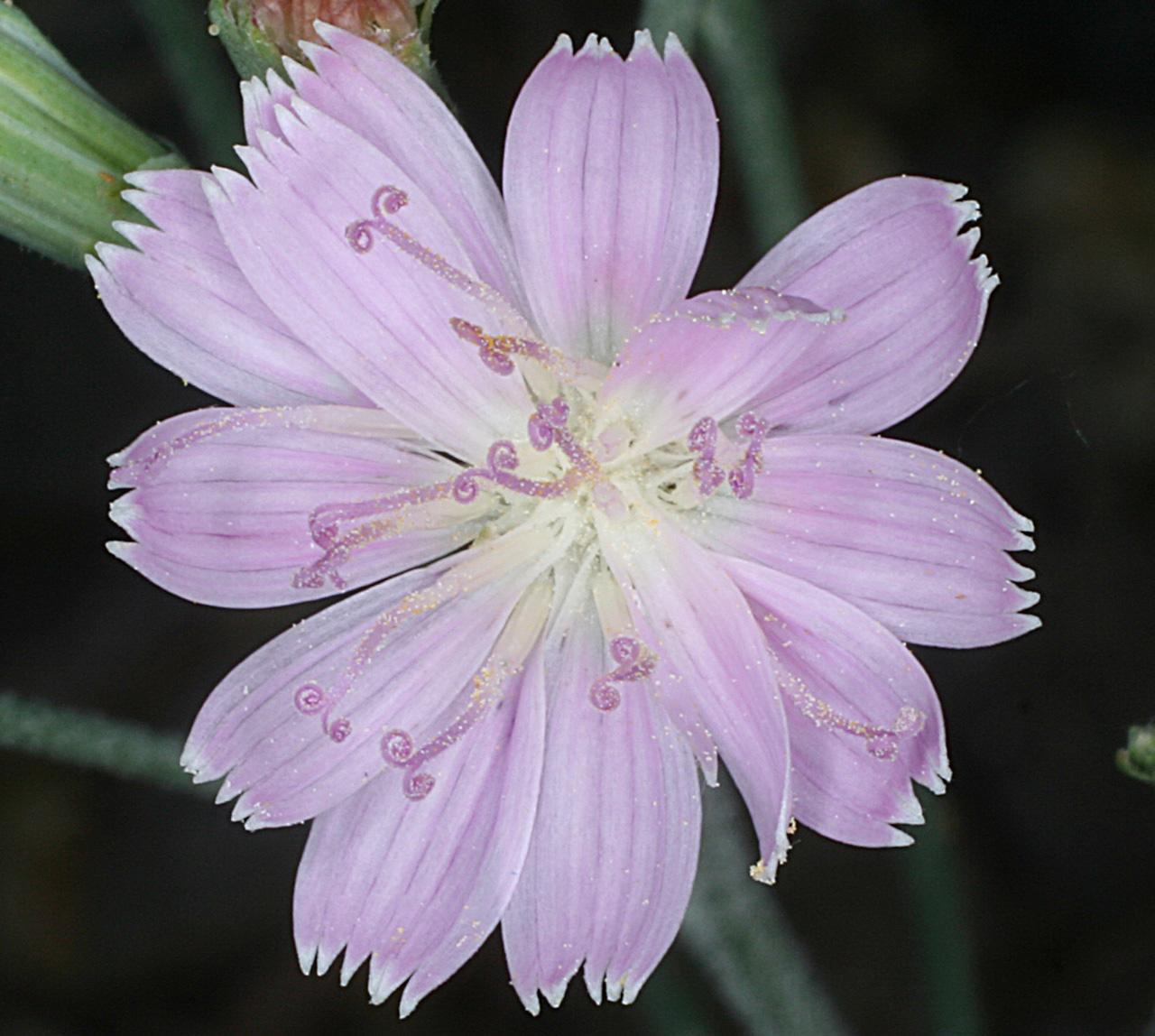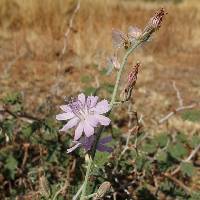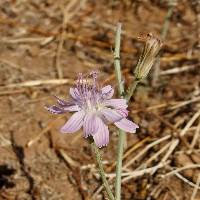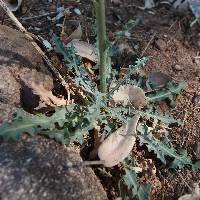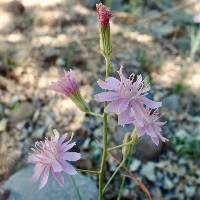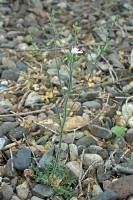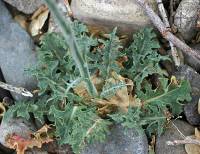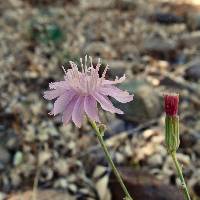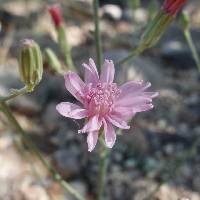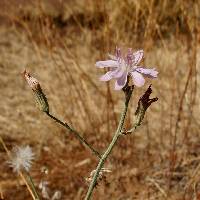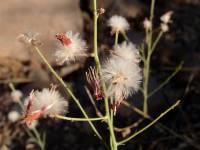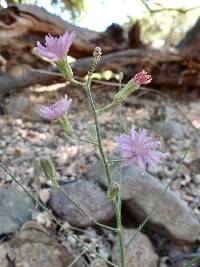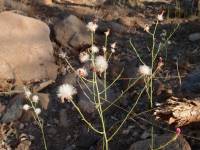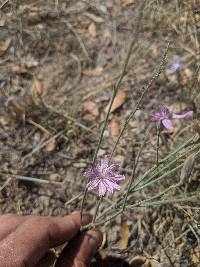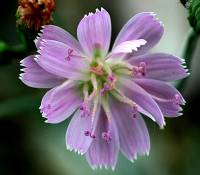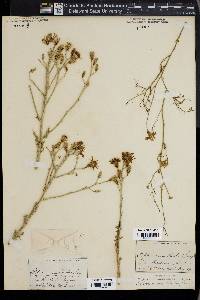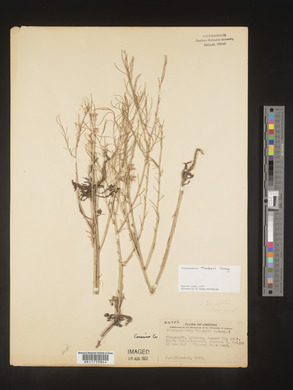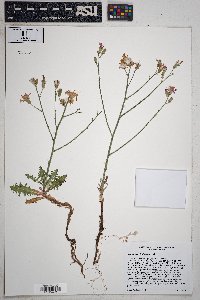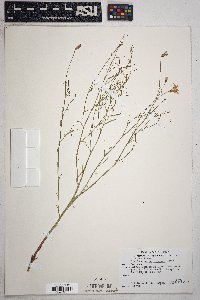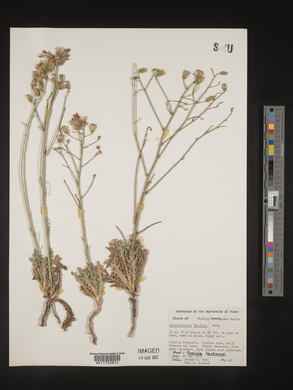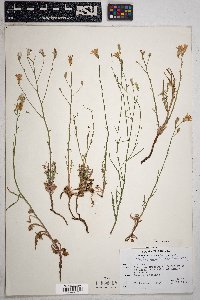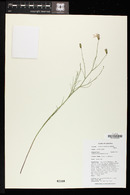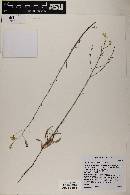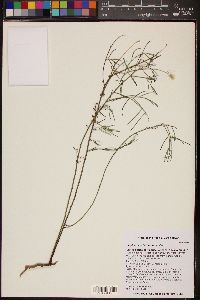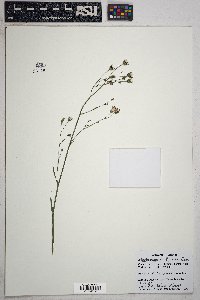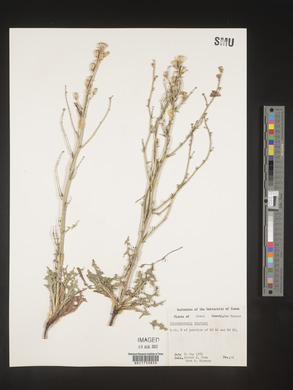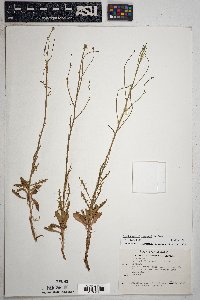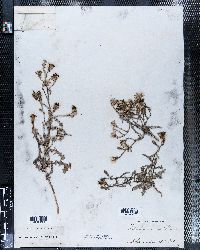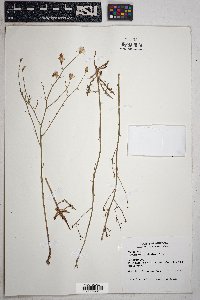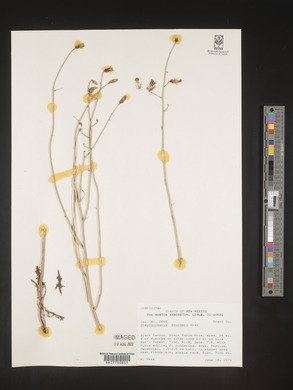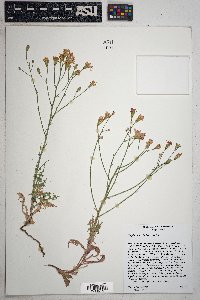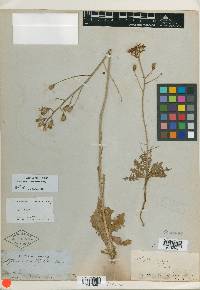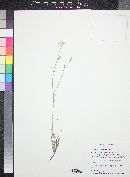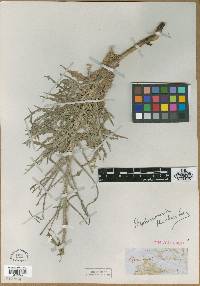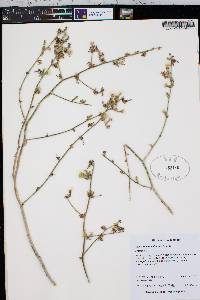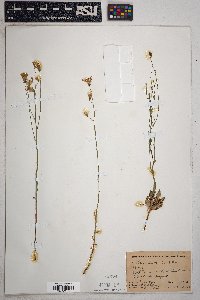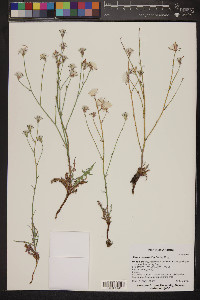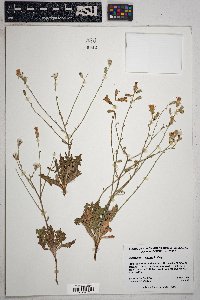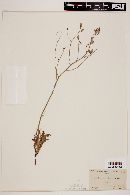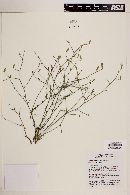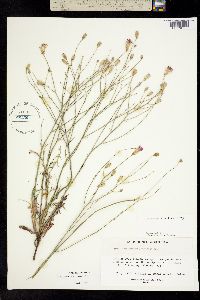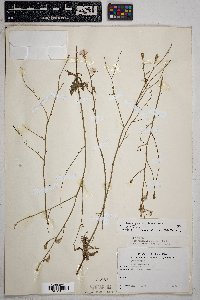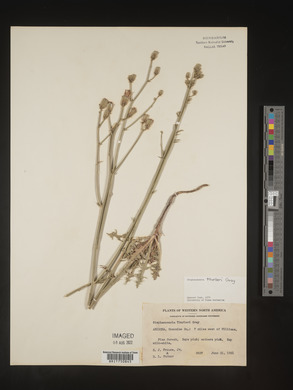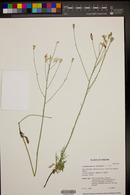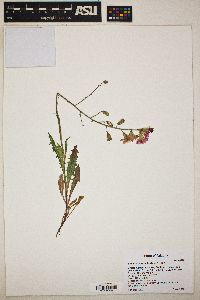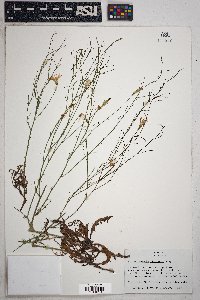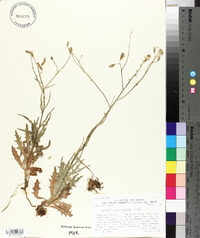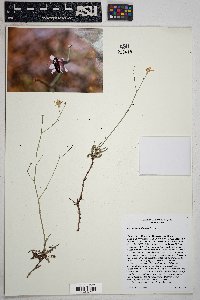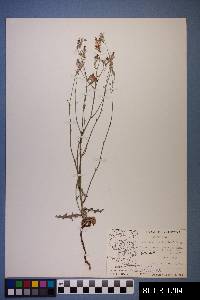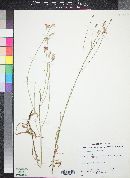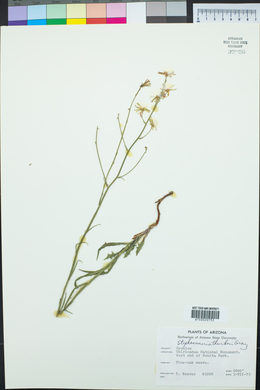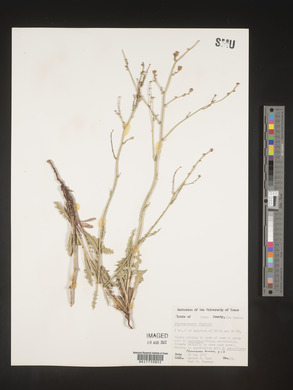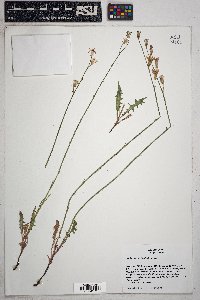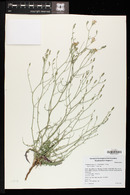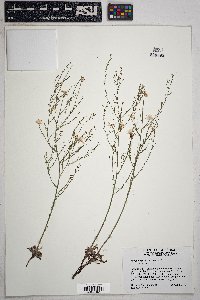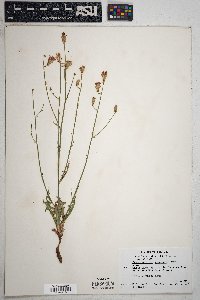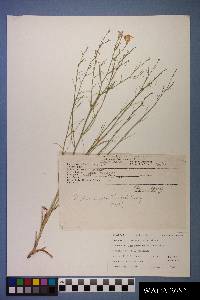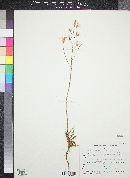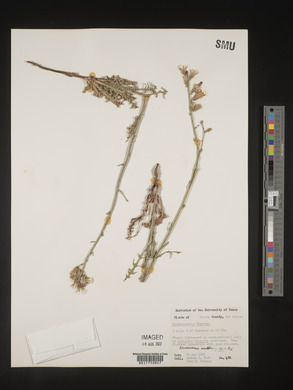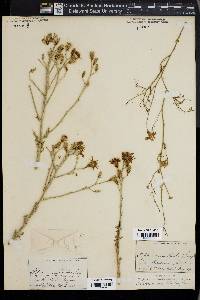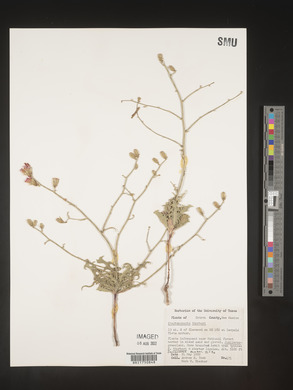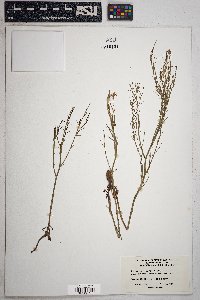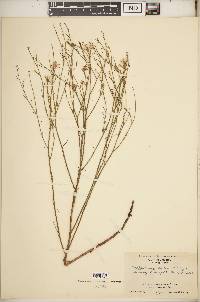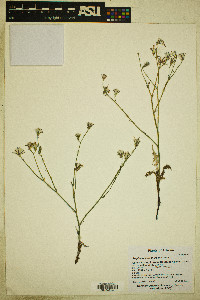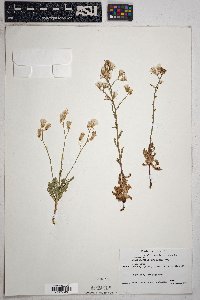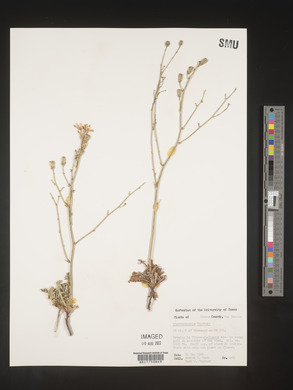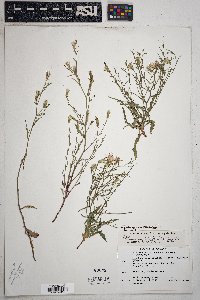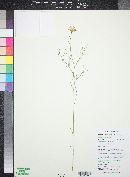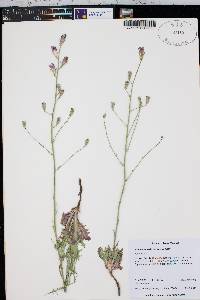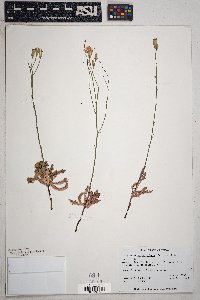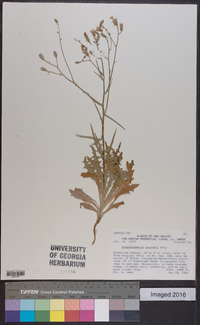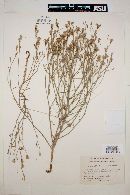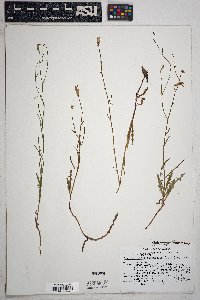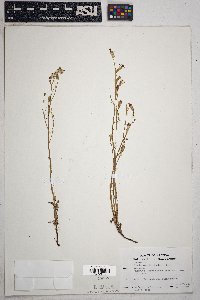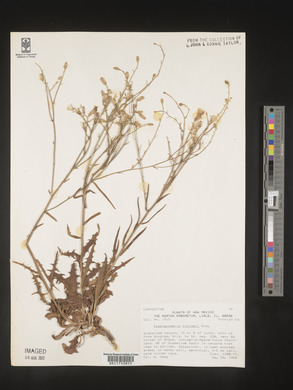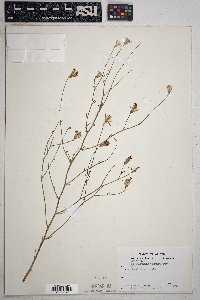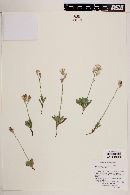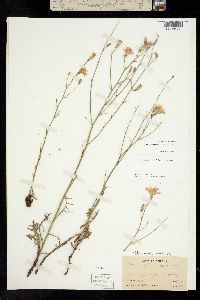
|
|
|
|
Family: Asteraceae
Thurber's Wire-Lettuce, more...Thurber's wirelettuce, Thurber wire lettuce
[Lygodesmia thurberi (A. Gray) Shinners] |
Perennials, 20-50 cm (rhizomes slender). Stems single. branches on distal 1/3-1/2, glabrous or sparsely puberulent. Leaves green at flowering (at least on plants of spring and early summer, frequently absent in plants of late summer); basal blades oblanceolate to spatulate, runcinate, 4-7 cm, margins pinnately lobed (faces glabrous or sparsely puberulent). cauline reduced, scalelike on plants of spring and early summer, linear and threadlike (to 3 cm) on plants of late summer. Heads borne singly on branch tips. Peduncles mostly 5-100+ mm (bracteolate). Calyculi of (4-6) appressed bractlets (unequal, lengths to 1/2 phyllaries). Involucres 9-11(-12) mm (phyllaries 6-8, glabrous). Florets 10-16(-20). Cypselae tan, 5-6 mm, faces smooth, grooved; pappi of 30-40, white bristles (persistent), wholly plumose. 2n = 16. Flowering May-Sep. Open, sandy sites in juniper-mesquite grasslands and in yellow pine forests, sometimes growing as weed along roadsides; 1200-2500 m; Ariz., N.Mex. Tex.; Mexico (Sonora). Stephanomeria thurberi has been collected most often in May, June, and early July. These specimens have well developed basal rosettes, stems with nodes 3+ cm apart, relatively short branches, usually only on the distal 30-50%, and scalelike, cauline leaves. That is the form described by Gray. Another form has been collected from late July into early September that is morphologically distinct, as first pointed out by A. S. Tomb on the labels of specimens he collected in 1968 and 1970 (see below). That 'summer form' lacks basal rosettes, the stems have more numerous nodes, about 1 per cm, beginning at ground level, and threadlike cauline leaves 3-4 cm. Those specimens usually have relatively few heads. Some specimens collected in July are intermediate, having basal rosettes and relatively long, threadlike cauline leaves, or no rosettes and relatively short, scalelike cauline leaves. It is not known if the different growth forms represent distinct genotypes that initiate growth at different times, or if the same individual produces aboveground parts with differing appearances during the growth season. It is also not known if the two forms commonly grow together as they do in Coconino County, Arizona (Tomb 280, August 10, 1968, and Tomb 631, June 12, 1970), or if they generally occupy different habitats. The unusual situation calls for study.
FNA 2006, Kearney and Peebles 1969, McDougall 1973 Duration: Perennial Nativity: Native Lifeform: Forb/Herb General: Herbaceous perennials, to 50 cm tall, stems branching only above or throughout, herbage glabrous to sparsely puberulent, plants with slender rhizomes. Leaves: Alternate, 4-7 cm long, margins rucinate-pinnatifid, mostly occurring in a basal cluster, the cauline leaves much reduced, linear, and entire, scalelike on plants of spring and early summer, linear and threadlike (to 3 cm) on plants of late summer. Flowers: Heads ligulate, relatively large,with 10-20 florets, the ligules white to pink, involucres 9-13 mm high, prominently small bracts around the calyx, the row of bracts around outer calyx of 4-6 unequal, appressed bractlets, phyllaries 6-8, glabrous, the heads few in a naked panicle. Fruits: Achenes tan, 5-6 mm, faces smooth or grooved and 5-angled. Pappus of 30-40 persistent, bright white, plumose bristles in a single series, the bristles plumose throughout. Ecology: Found on sandy soils in juniper-mesquite grasslands, yellow pine forests, along roadsides, and open forests or woodlands, from 4,000-8,000 ft (1219-2438 m); flowering May-September. Distribution: Arizona, New Mexico, Texas; Mexico. Ethnobotany: Unknown, but other species in the genera have uses. Etymology: Stephanomeria is derived from Greek stephane, wreath or crown and meros, division, while thurberi is named for Dr. George Thurber (1821-1890) a botanist on the Mexican Boundary Survey of 1850-1854. Synonyms: None Editor: LCrumbacher 2011 |
|
|
|
This project was made possible in part by the Institute of Museum and Library Services [MG-70-19-0057-19].
Powered by Symbiota

